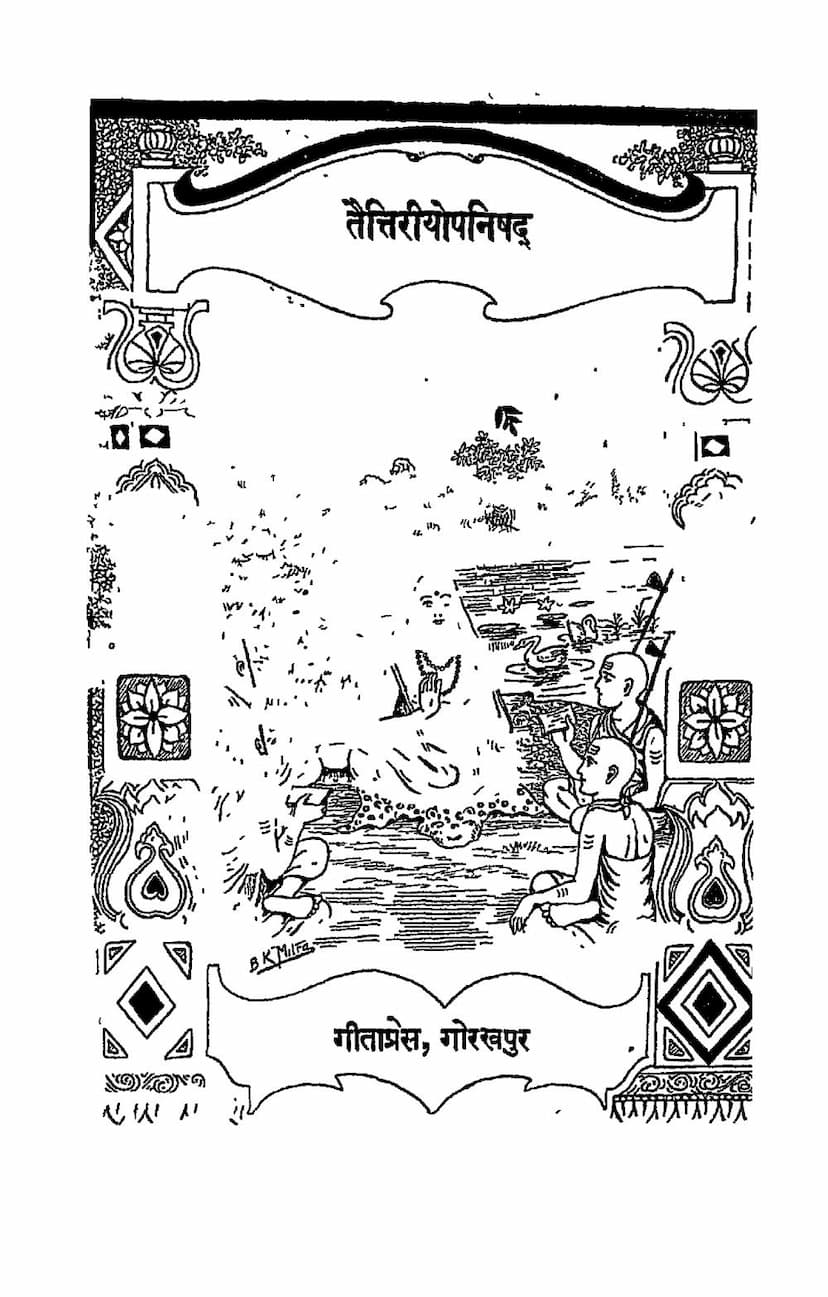Taittiriyo Pnishad
Added to library: September 2, 2025

Summary
This is a summary of the Taittirīya Upaniṣad, a significant text within the Krishna Yajurveda, published by Gita Press, Gorakhpur. The provided catalog link and page excerpts indicate a comprehensive edition including the original Sanskrit text, a Hindi translation, and commentary by Śaṅkarācārya.
The Taittirīya Upaniṣad is divided into three main sections, or Vallis:
-
Śikṣāvallī (Chapter 1: The Chapter of Śikṣā): This section focuses on the preparatory aspects for understanding the deeper philosophical teachings.
- Purpose: It begins with a Śānti Pāṭha (peace invocation) and then delves into Śikṣā, the science of correct pronunciation and articulation of Vedic hymns. This is crucial for proper Vedic recitation and understanding.
- Content: It covers aspects like vowels, consonants, intonation (svara), duration of sounds (mātrā), emphasis (balam), uniformity in pronunciation (sāma), and the joining of sounds (sāntāna or saṃhitā).
- Symbolic Meditations (Upāsanā): It then introduces various symbolic meditations like the saṃhitopāsanā (meditation on the joining of sounds) across five categories: adhiloka (relating to the world), adhijyotiṣa (relating to celestial lights), adhividya (relating to knowledge/teachers), adhipraja (relating to progeny), and adhyātma (relating to the self). These meditations are presented as a way to achieve specific goals like prosperity, knowledge, and progeny.
- Japa and Homa Mantras: Mantras for japa (chanting) and homa (fire rituals) are provided for those seeking śrī (wealth/prosperity) and medhā (intellect).
- Vyāhṛti Upāsanā: The meditation on the Vyāhṛtis (Bhūr, Bhuvaḥ, Svaḥ, and Mahaḥ) is described, linking them to various cosmic and personal elements and culminating in the realization of Mahas as Brahman, leading to svārājya (self-rule/sovereignty).
- The Cosmic Bird Metaphor: The Upaniṣad uses the metaphor of a cosmic bird to describe the five kośas (sheaths or layers of existence) – annamaya (food sheath), prāṇamaya (life-force sheath), manomaya (mind sheath), vijñānamaya (intellect sheath), and ānandamaya (bliss sheath).
- Omkāra Upāsanā: The importance and meditation on the sacred syllable Om are highlighted as a means to attain Brahman.
- Ethical and Ritualistic Duties: The text emphasizes the importance of performing certain duties like continuing study (svādhyāya), teaching (pravacana), speaking truth (satya), following Dharma, and respecting elders and guests. It also discusses the reasoning behind the necessity of these actions for spiritual progress.
- Trishanku's Discourse: The Vedānānuvacana (discourse on Vedas) of the sage Trishanku is presented, containing profound statements about the self's divine nature.
- The Teacher's Final Instructions: The Śikṣāvallī concludes with the teacher's final admonitions to the disciple on ethical conduct, fulfilling duties, and seeking guidance from wise and virtuous individuals, especially when faced with doubt. It reinforces that the ultimate goal is the knowledge of Brahman.
-
Brahmānnad Vallī (Chapter 2: The Chapter of Brahmananda): This section delves directly into the nature of Brahman and the bliss derived from its realization.
- Core Statement: It starts with the foundational statement "Brahman is Truth, Knowledge, Infinite" (satyaṃ jñānamanantaṃ brahma).
- Cosmic Creation: It describes the process of creation, starting from Brahman as the source, leading to ākāśa (ether), vāyu (air), agni (fire), āpas (water), pṛthivī (earth), and then to plants, food (anna), and finally the human being (puruṣa).
- The Five Kośas: It elaborates on the five kośas, describing them as layers of the human constitution, starting from the annamaya kośa (food sheath) and moving inward to the ānandamaya kośa (bliss sheath), which is identified with Brahman. Each kośa is described with its own metaphorical "head," "wings," "body," and "tail/support."
- Bliss as Brahman: The text explains that Brahman is pure bliss (ānanda). It quantifies bliss by comparing the bliss of a human to that of various celestial beings (Gandharvas, Devas, Indra, Prajapati, Brahman), demonstrating that the bliss of Brahman is immeasurably greater.
- Realization and Fearlessness: It asserts that the realization of Brahman leads to fearlessness (abhaya), as the individual merges with the non-dual Brahman, where there is no "second" to fear. The text distinguishes between the bliss of those who desire results and the unconditioned bliss of a knower of Brahman.
-
Bhrguvallī (Chapter 3: The Chapter of Bhrgu): This section presents an inquiry into Brahman through a dialogue between the sage Bhrgu and his father, Varuna.
- The Inquiry: Bhrgu approaches his father Varuna seeking knowledge of Brahman, the source of existence, sustenance, and dissolution.
- Progressive Revelation: Varuna initially directs Bhrgu to perform tapas (austerity/meditation) and identifies tapas itself as Brahman. Through repeated inquiries and further tapas, Bhrgu gradually identifies Brahman first as anna (food), then prāṇa (life-breath), manas (mind), vijñānam (intellect), and finally, ānanda (bliss) as the ultimate reality.
- The Significance of Food: The text emphasizes the importance of food, discouraging its waste or disrespect and encouraging hospitality. The exclamation "Aham annam" ("I am food") signifies the realization of unity with food.
- Emphasis on Tapas: The narrative highlights that all these realizations are achieved through tapas, indicating its crucial role in spiritual understanding.
Overall Message:
The Taittirīya Upaniṣad, particularly through Śaṅkarācārya's commentary, aims to establish that knowledge of Brahman (Brahma-vidyā) is the sole means to attain liberation (mokṣa). It refutes other paths, such as mere ritualistic actions (karma), as inadequate for the ultimate goal, emphasizing that while karma has a role in purifying the mind and removing obstacles, true liberation comes from direct knowledge of the self's identity with Brahman. The text provides both preparatory knowledge (Śikṣāvallī) and the direct means to realize the ultimate truth (Brahmānandavallī and Bhrguvallī). It stresses the importance of ethical conduct, meditation, introspection, and the guidance of a Guru in this pursuit.